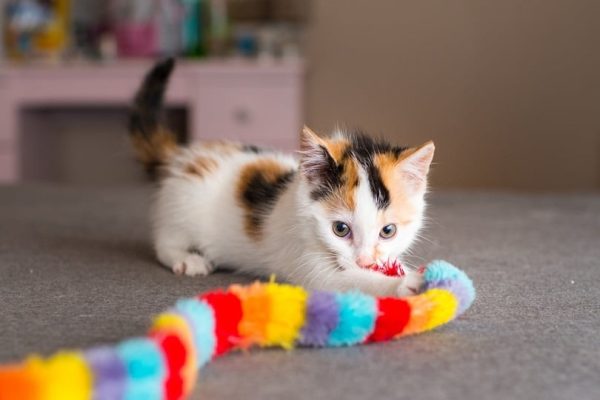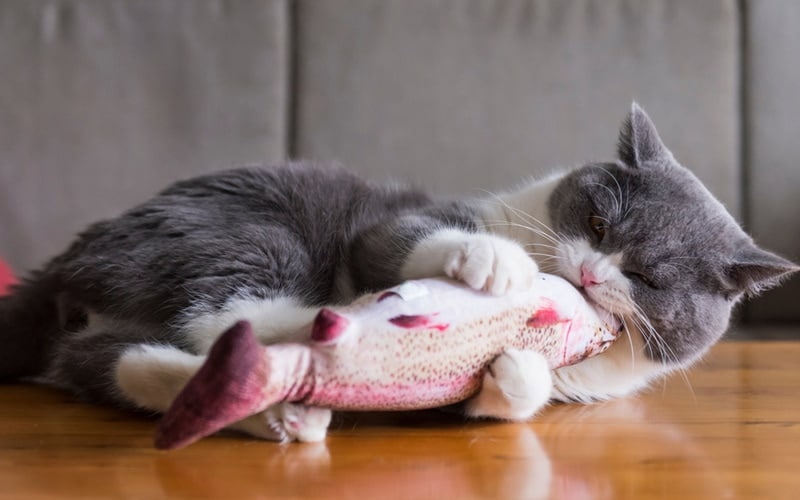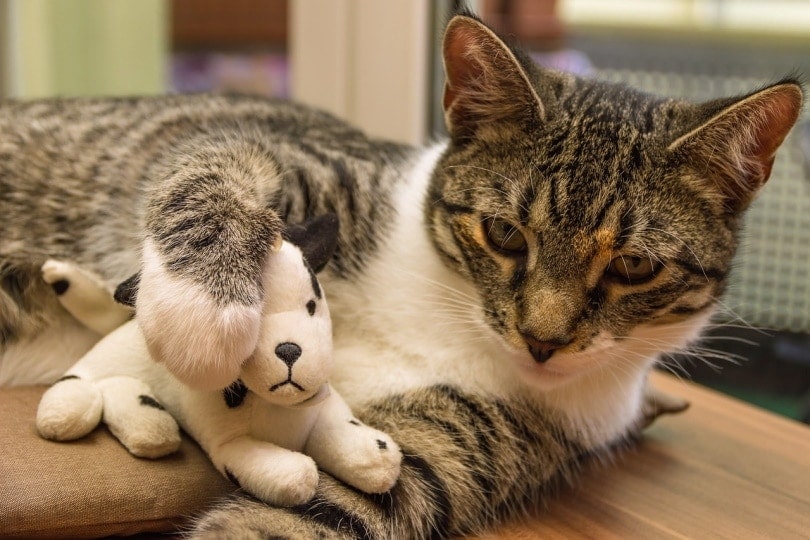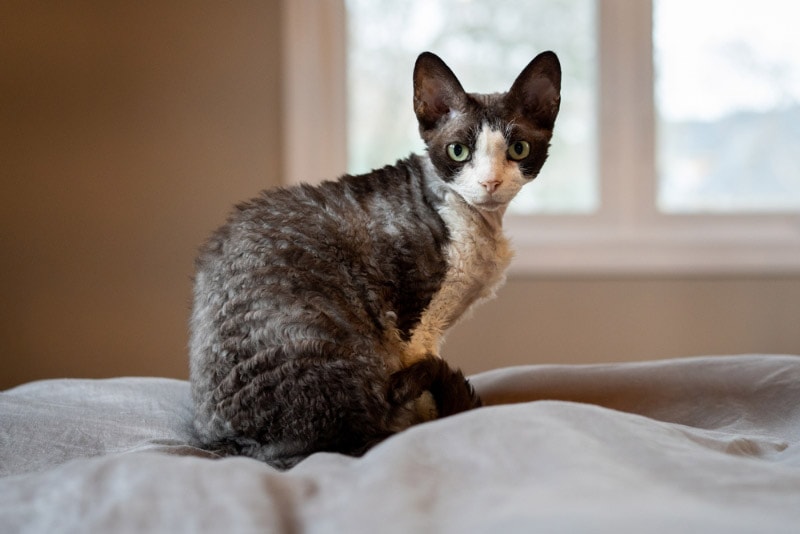Cats are strange creatures with adorable, quirky habits that make them endlessly fascinating to watch as they go about their enigmatic feline business around our home. Cat owners have probably seen their cat sitting on their toys for no apparent reason or sitting on random objects around the house sometimes, like boxes or plastic bags. No matter what the object is, your cat has probably sat on it in some way. Why? We’ll explain six potential reasons below.
The 6 Possible Reasons Why Cats Sit on Their Toys
1. To Hide It
Your cat might be possessive of their toy or even think of it as a prey animal, which would explain their innate drive to protect it. Cats in the wild have few ways to guard food or prey and might sit on it to hide it from encroaching predators, and the cat in your house might feel the same urge. Lying on a small animal like a mouse is also an effective way to smother them before the cat dines. This feeds into their natural hunting instincts and helps keep them sharp.

2. To Protect It
Cats in the wild might sit on their yet-to-be-eaten food or even their babies in the wild, and your cat in captivity is similarly driven to protect their natural resources or family. Food is hard to come by in the wilderness, and even with plenty of it, they could feel compelled to sit on their favorite toys, which may smell like food or catnip. Regardless of the exact reason, cats are jealous when it comes to prized resources like food or even favorite toys.
3. They’ve Learned That It Gets Them Attention
Sitting on odd objects like toys, boxes, or bags gets cats’ attention because it’s adorable, and cats are very quick thinkers. They catch on quickly that you flip out when they sit on their toys or other stuff and will begin to do it more frequently in hopes that you give them more attention. It’s frightfully effective and cute, but it’s typically harmless.

4. They’re Putting Their Scent on the Toy
Cats rely more heavily on scent than we do, and they’re driven to mark their territory. For cats, territory includes all objects within that territory, including toys, food, and so on. Cats have scent glands throughout their bodies that release subtle pheromones we can’t smell but that they and other cats can. For instance, they have scent glands in their chins, which also explains why they rub their chins on us.
5. It Has Your Scent on It
Cats are sentimental critters that grow to love certain smells, including yours. Items that you frequently handle or touch, like clothing, carry your scent, but even minor items like toys can hold your scent for a long time to a cat’s enhanced olfactory abilities. Your scent becomes something to be revisited and valued by your cat, which you should take as a compliment.

6. Lying on Top of Things Keeps Your Cat Warm
Cats run a little hotter than us humans, which explains why cats appear attracted to heat. Toys offer a little insulation against the cold, bare ground, so they prefer to be nestled in a cozy bed. However, you may have noticed that your cat avoids bare tile or hardwood flooring, and sitting on toys is a minor buffer for them.
Conclusion
Cats love to sit on toys, bags, boxes, and nearly anything they can interact with. Without real prey to hunt, your house kitty is naturally inclined to sit on toys for a variety of reasons that you’ll never quite pin down. Still, it’s likely that some of the reasons above play a role!
Featured Image Credit: Heather Raithby Doyle, Shutterstock










